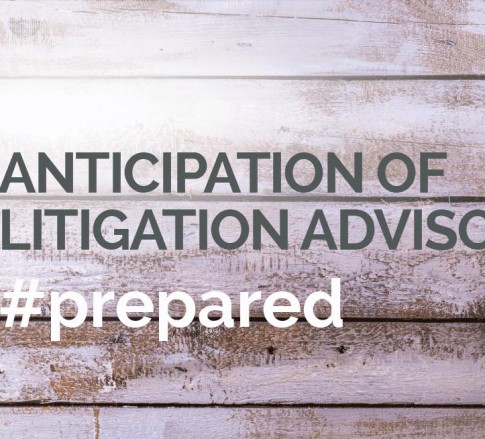"This Email Will Self-Destruct in Five Seconds": Benefits and Risks of Self-Destructing Electronic Communications
May 17, 2018
By: William "Bill" J. Aubel
“This message will self-destruct in five seconds.”
This is probably the most recognizable quote from the Mission Impossible movie franchise and television series. Once thought of as futuristic and far-fetched, self-destructing messaging is a very real application in 2018. Although you won’t experience a cool miniature explosion or puff of smoke from your computer or smart device, self-destructing electronic communications are still cool, offer interesting benefits, and present only a couple slight risks.
How It Works: Self-destructing messaging applications transmit information with end-to-end encryption and auto destruct after a set period of time or after receipt and access by the intended recipient.1 Different applications offer different features, including, but not limited to: the ability to control distribution of messages (to a small group versus a community of users), message encryption, private messaging capabilities, prevention of screenshots, untraceable messaging, and removal of messages from others’ devices.2 Popular self-destructing messaging applications include Wickr, Telegram, Snapchat, and Confide. Self-destructing messages is also making its way into mainstream e-mail providers. On April 25, 2018, Google updated its popular Gmail platform to offer users a “Confidential mode” to automatically destroy messages after either a month, a week, or a day.3
Benefits of Self-Destructing Electronic Communications
- Confidentiality. Self-destructing electronic messages permit free discussion of confidential issues while reducing the risk of inadvertent disclosure of confidential information. Companies and organizations that deal heavily in sensitive information — i.e., hospitals, insurance companies, law firms, etc. — would be less likely to suffer a data breach if they utilized this technology.
- Information Security.4 Self-destructing electronic communications can minimize the fallout after a data security incident. For example, if a company implemented a policy requiring communications to be deleted based after 60 days, a hacker could not obtain sensitive information older than 60 days. Self-destructing electronic communications might even deter hackers from attempting to compromise systems in the first place because sensitive information has expired.
- Lower e-Discovery Costs. Much of the cost of modern litigation comes from the collection, processing, review, and production of electronically-stored information (“ESI”). An appropriate data deletion strategy, featuring self-destructing electronic communications, could avoid significant e-discovery expense. Because e-discovery costs are largely a by-product of data volume, the use of self-destructing electronic communications can minimize companies’ costs in future litigation by “expiring” and deleting old data.
- Lower Data Storage Costs. Companies can also save in data storage costs by using self-destructing electronic communications. As of 2012, companies were spending an average of $5 Million per petabyte to retain historic information.5 Little value exists in storing non-essential information. The Compliance, Governance, and Oversight Council — a group of more than 3,600 legal, IT, records, and information management professionals from corporations and government agencies whose mission is to provide executives with insight, interaction, and information needed to make good business decisions — claims that over 70% of corporate data has little or no business value and could be safely, routinely deleted by utilizing self-destructing electronic communications.
Risks of Self-Destructing Electronic Communications
- Appearance of impropriety. If law firms, corporations, etc. aren’t transparent about their communications and communications records are destroyed automatically, then others might conclude that they are hiding something. However, this risk can be counter-acted by creating and uniformly implementing clear data destruction policies and by explaining the benefits of that policy.
- Destruction of relevant evidence. Parties have a duty to preserve relevant information whenever the threat of litigation arises. The use of self-destructing messaging may present risk relating to this duty if people aren’t careful. Attorneys should explain to clients that self-destructing messaging may need to be disabled or used more carefully if a legal hold is issued.
1. The Perks and Perils of Self-Destructing Messages, JDSupra (Jan. 17, 2018), https://www.jdsupra.com/legalnews/the-perks-and-perils-of-self-22483/.
2. A New Frontier in eDiscovery Ethics: Self-Destructing Messaging Applications, Driven, Inc., http://www.driven-inc.com/a-new-frontier-in-ediscovery-ethics-self-destructing-messaging-applications/.
3. The New Gmail Sends Self-Destructing Emails — and Nudges You to Reply to Mom, The Washington Post (April 25, 2018), https://www.washingtonpost.com/news/the-switch/wp/2018/04/25/the-new-gmail-sends-self-destructing-emails-and-nudges-you-to-reply-to-mom/?noredirect=on&utm_term=.04da52c2a93e.
4. Key Considerations for Adopting Ephemeral Communications Tools, Adam C. Lenain and Wynter Lavier Deagle, The National Law Review (Aug. 3, 2017), https://www.natlawreview.com/article/key-considerations-adopting-ephemeral-communications-tools.
5. Compliance, Governance & Oversight Council, Information Economics Process Assessment Kit at 3 (2012).



